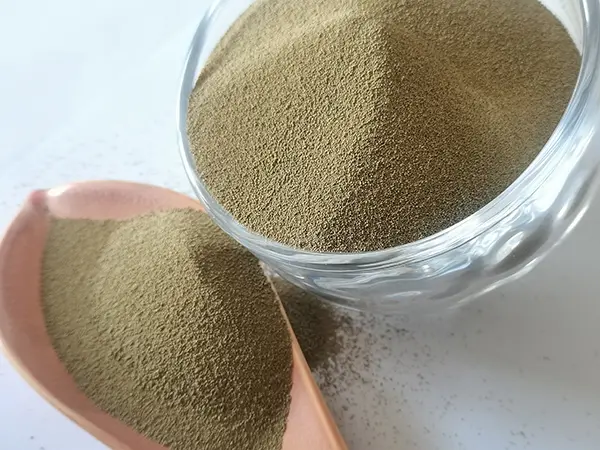The Versatility of Ceramsite An Innovative Material for Sustainable Solutions
Ceramsite, an innovative lightweight aggregate made from expanded clay, has gained significant attention in various industries due to its unique properties and versatility. This material is produced by heating clay at high temperatures, causing it to expand and form small, porous particles. The development of ceramsite has revolutionized construction, agriculture, and environmental management, making it a valuable resource in sustainable practices.
Characteristics and Production Process
Ceramsite is known for its lightweight nature, high strength, thermal insulation, and excellent drainage capabilities. These attributes stem from the production process, which involves firing clay to levels exceeding 1,200 degrees Celsius. As the clay is heated, the organic compounds within it combust, creating a network of tiny air pockets. The result is a material with a low density, which is crucial for applications requiring reduced weight without compromising structural integrity.
The production process of ceramsite is not only energy-intensive but also customizable. By varying the raw materials and firing conditions, manufacturers can tailor ceramsite to meet specific requirements, such as different particle sizes, densities, and strength characteristics. This adaptability has made ceramsite a popular choice in many applications, particularly in construction and landscaping.
Applications in Construction
In the construction industry, ceramsite is primarily used as a lightweight aggregate in concrete. When mixed with traditional materials, it reduces the overall weight of the concrete, making it easier to work with and less burdensome on structural components. This is particularly advantageous in high-rise buildings, where weight reduction can lead to significant cost savings in materials and foundations.
Moreover, ceramsite enhances the thermal efficiency of buildings. Its insulating properties help maintain consistent indoor temperatures, reducing energy consumption for heating and cooling. This contributes to lower energy bills and a decreased carbon footprint for building occupants. Furthermore, ceramsite's excellent drainage capabilities make it an excellent choice for landscaping, where it can be used in soil mixes to improve aeration and water retention.
ceramsite

Environmental Benefits
One of the most compelling reasons for the growing popularity of ceramsite is its environmental benefits. The production of ceramsite can utilize waste materials, such as industrial byproducts and natural clays that would otherwise contribute to landfill waste. This not only promotes recycling but also reduces the demand for traditional aggregates that may be sourced from environmentally sensitive areas.
Moreover, ceramsite contributes to sustainable water management. In modern agricultural practices, ceramsite is used as a substrate in hydroponics and aquaponics systems. Its ability to retain moisture while providing excellent drainage creates an ideal environment for plant roots, leading to healthier growth and higher yields. This is particularly crucial in arid regions where water conservation is paramount.
Future Prospects
As the world increasingly focuses on sustainability and eco-friendly practices, the demand for materials like ceramsite is poised to grow. Innovations in production techniques and applications in new fields are likely to emerge, paving the way for even more uses. For instance, researchers continue to explore the integration of ceramsite into building materials that offer enhanced performance, such as self-healing concrete or noise-reducing formulations.
Conclusion
Ceramsite stands out as a multifaceted material that aligns with contemporary demands for sustainable development across various sectors. Its lightweight properties, thermal efficiency, and environmental benefits make it an excellent choice for construction, agriculture, and beyond. As industries continue to innovate and seek out sustainable alternatives, ceramsite is likely to play a pivotal role in shaping a more sustainable future. The ongoing research and development in this field not only promise to enhance existing applications but also to unlock new possibilities for this remarkable material in addressing the world's environmental challenges.
Post time:ספט . 30, 2024 13:32
Next:Услуги по обработке литейного песка для промышленности и производства
